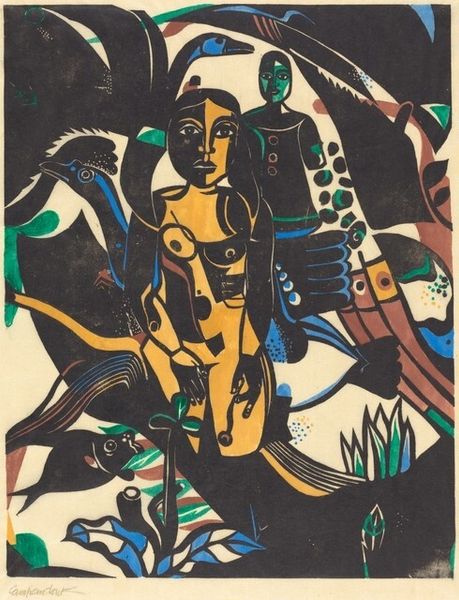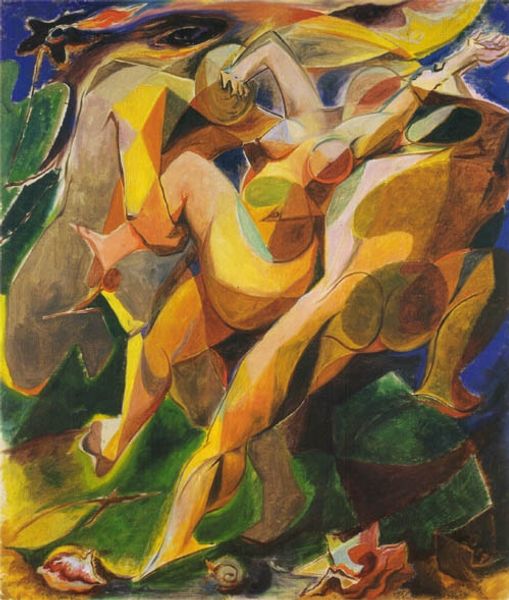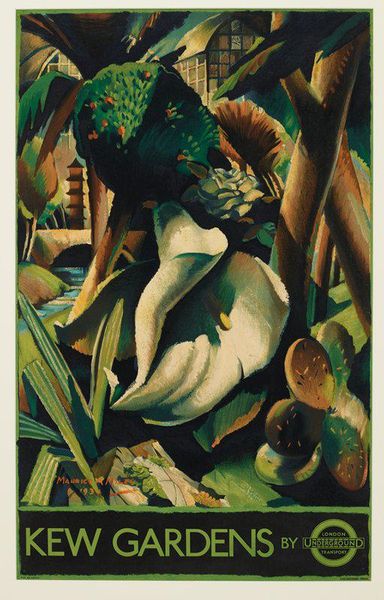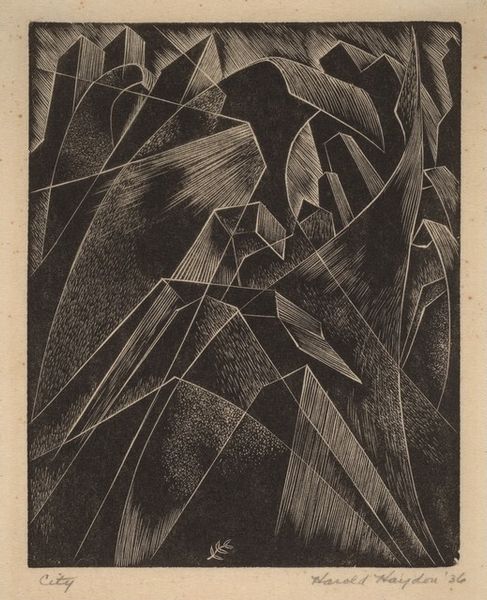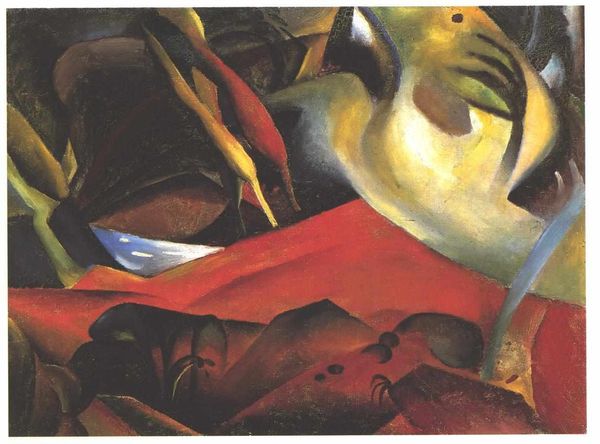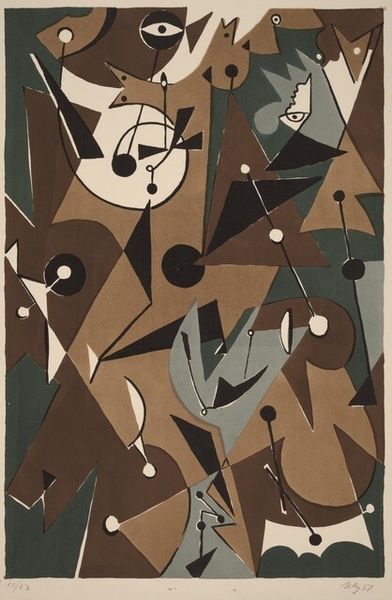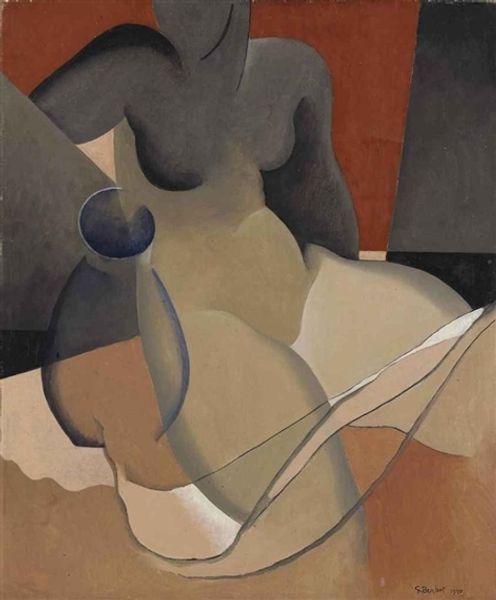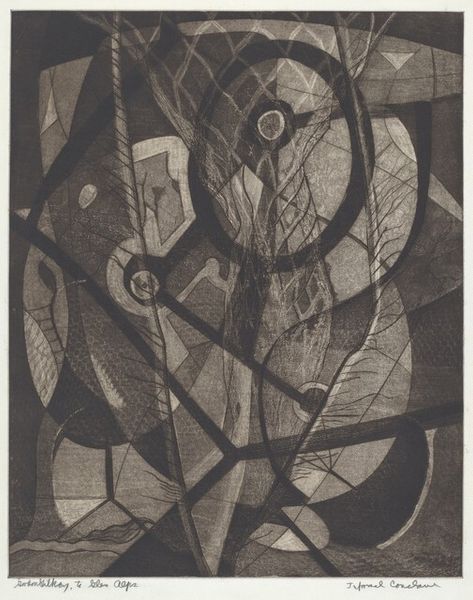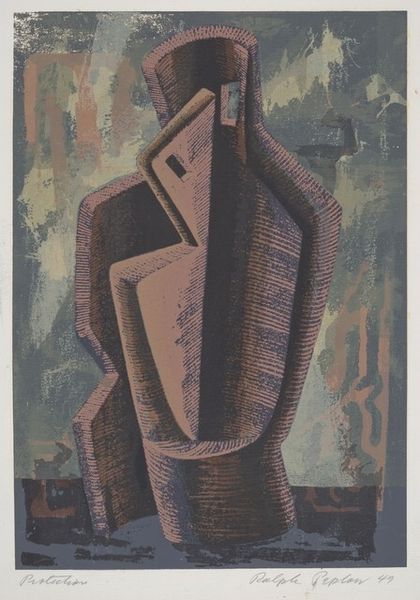
graphic-art, color-lithograph, print, poster
#
art-deco
#
graphic-art
#
cubism
#
color-lithograph
# print
#
animal portrait
#
cityscape
#
poster
Dimensions: 39 x 24 3/8 in. (99.1 x 61.9 cm) (sheet)46 3/8 x 31 3/8 in. (117.79 x 79.69 cm) (outer frame)
Copyright: No Copyright - United States
Editor: This lithograph, "For the Zoo," was created in 1933 by Maurice A. Miles. It strikes me as a curious mix of imposing scale and almost claustrophobic composition. The geometric forms lend the elephant an interesting abstract presence. What are your initial thoughts when you look at this piece? Curator: Well, instantly, it's clear this is more than just an animal portrait. This is a commercial poster, intended to shape public behavior and promote the London Underground. Consider the period: the 1930s in Britain. Public art and design were being consciously deployed to improve citizens' lives and bolster a sense of national identity. Do you see how the style serves this purpose? Editor: I can see how the geometric forms, maybe Cubist-inspired, give it a very modern and bold look. It grabs your attention. But how does an elephant fit into national identity? Curator: Ah, there's the nuance! Zoos, especially in that era, were seen as sites of education and even empire. Displaying exotic animals reinforced Britain’s global reach and power, and this poster subtly reinforces that message while also advertising convenient transportation. Consider where those animals came from and the socio-political implications of that acquisition. How do you see that tension playing out in the visual composition? Editor: Now that you mention it, the fragmentation and darkness surrounding the elephant do hint at a less-than-ideal context. It's not just a celebration, it's also...a display? Curator: Exactly! By going “for the zoo”, one wasn't just seeing animals, but implicitly participating in a system of power and representation. The artist, perhaps consciously or not, captured some of that tension. Editor: That is much more layered than I initially realized. I’ll definitely view similar works with a new critical eye. Curator: And hopefully, it highlights the role that public art played, and continues to play, in shaping how we understand our world.
Comments
No comments
Be the first to comment and join the conversation on the ultimate creative platform.
